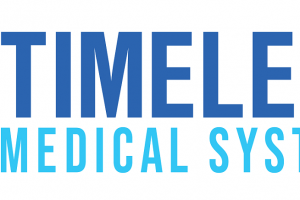Top 5 EHR Replacement Tips to Ensure Patient Safety, EHR Training
Health IT experts at Penn Medicine focused on EHR training, EHR optimization, and patient safety to run a successful EHR replacement.
An EHR replacement can be a significant stress test for a health system. However, prepared and well-trained employees can run through this process more smoothly when they focus on EHR training and patient safety, according to a Penn Medicine News blogpost.
Two health IT experts hailing from Penn Medicine, John D. McGreevey III, MD, associate professor of Clinical Medicine and Ross Koppel, MD, senior fellow of the Institute of Biomedical Informatics, created a list of recommendations to aid providers and increase patient safety during an EHR replacement.
EHR SOFTWARE AND TRAINING COSTS ARE IMMENSE
It comes as no surprise that transitioning to a new EHR system is a massive investment for a health system.
“You need to consider the extra personnel from IT, the clinicians, consultants, and extra resources, like databases, and all of the legacy systems that need to be connected,” Koppel explained. “Often, you’re dealing with new software and new builds. None of this comes cheap.”
In 2019, University Health System (UHS) in Texas invested over $170 million to implement its new Epic Systems EHR platform. Although the health system said it would roughly save $12 million annually, it is still a major expense.
READ MORE: Top EHR Implementations of 2020, So Far
Furthermore, the two experts said EHR training on the new system is costly and a time commitment. While extensive EHR training improves EHR satisfaction and patient safety down the line, it can result in clinician burnout at the time.
ADAPTING TO THE NEW EHR SYSTEM AND ITS INTRICACIES
During an EHR replacement project, users experience workflow issues because they are used to working with the prior EHR system. As a result, clinician burnout could increase and patients could see delays.
“Failure to attend to these often overlooked organizational ‘housekeeping’ needs can add time and complexity to the EHR transition process and potentially create some risks in patient care if they get lost in the process,” said McGreevey.
For example, in 2019, patients at Memorial Hospital in Conway, New Hampshire, cited immense lag in prescription refill request approval after the hospital transitioned to an Epic Systems EHR. In the first month of Epic adoption, clinicians checked each patient’s health information against the old system and then updated the information on the new system. Memorial Hospital added additional staff to streamline workflow.
IT TAKES A TEAM EFFORT FOR THE EHR TRANSITION TO RUN SMOOTHLY
The two authors said it takes more than a proficient IT team to run a smooth EHR replacement. For example, an IT team needs help with translating clinical content from experts such as clinical informaticists.
READ MORE: Improving EHR Usability, Interoperability to Aid Patient Safety

“Hiring more IT staff for these transitions is sometimes necessary because EHRs can create new work as well as new maintenance tasks,” McGreevey explained. “Outside consultants for hire can help during a transition to a new EHR, but they may not have the cultural and political knowledge of the institution to be maximally effective.”
As noted, this magnifies the importance of consistent training. It is common to emphasize the EHR vendor and implementation of new EHR technology as a panacea. However, sustaining the technology and enhancing EHR usability comes down to EHR optimization.
Better EHR usability leads to higher EHR adoption rates, fewer clinical errors, less clinician burnout, financial benefits, and improved patient safety.
“Training is complex and a need that persists beyond the new EHR go-live date,” McGreevey said. “There are tasks that may not be covered in the basic training because of time limitations, but need to be covered later on.”
Once fully implemented, healthcare organizations can execute summative testing. These tests include expert review, performance testing, risk assessment, and usability testing.
FOCUS ON PATIENT SAFETY IN THE EARLY STAGES
READ MORE: EHR Training Cited as Top Predictor of EHR User Satisfaction
Putting a focus on the new EHR user interface will positively impact patient safety. An undertrained clinician using the new interface for the first time could have a negative influence on patient safety, clinician burnout, and basic clinical operations.
A lack of data integrity also impacts patient safety.
Ensuring the EHR is appropriately set on the correct drug entry measurement could differentiate life and death. If the EHR training is not up to standards, serious consequences could occur.
“Patient care relies on EHRs now, and that makes these data overhauls especially precarious,” Koppel said. “Teams need to be especially careful about how data is switched over and when, making sure that nothing is lost or accidentally buried.”
Furthermore, health systems are an easier target for cybersecurity attacks during an EHR transition due to its vulnerability, the authors wrote.




















